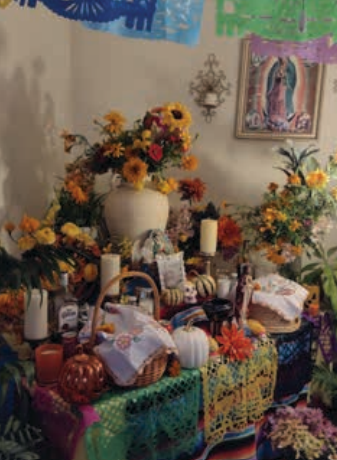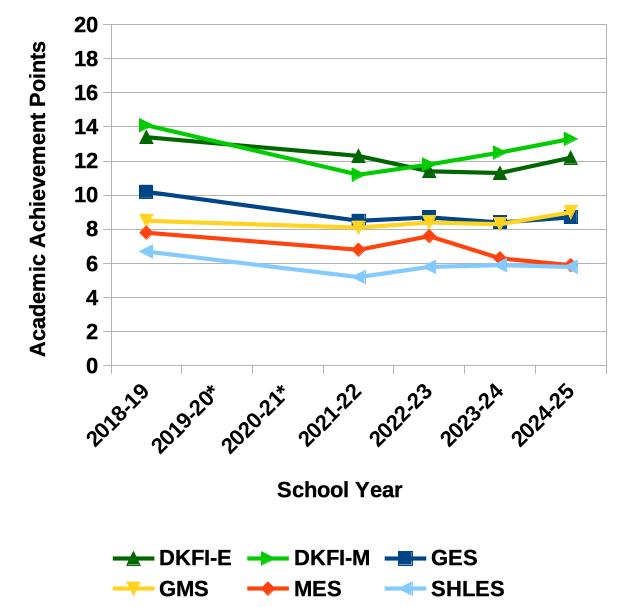The famed Mexican celebration called el Dίa de Los Muertos (the Day of the Dead) is alive and well in the homes of some Greenbelt residents of Mexican origin.
While the name of the festival may sound morbid or scary to some, it’s experienced by those who continue the tradition as a joyful, meaningful and festive way for families to celebrate their ties with loved ones who have died, but whose memories continue to enrich the living.
By creating an altar dedicated to the “fieles difuntos” or deceased faithful, memories are kept alive and hearts warmed by connections with ancestors and other relatives who still make up part of the fabric of the community.
The altars pictured were created here in Greenbelt by Veronica Ramos in 2021 and 2022. Ramos has lived here for 20 years. She makes this celebration happen for her family as a way of keeping their Mexican culture and traditions alive, and to pass them on to the younger generation.
With the various offerings on the altar, the family hopes to attract and give enjoyment to the souls they anticipate. The light of the candles is meant to guide them on their paths. On any Day of the Dead altar, there are many flowers, offerings of food and drink, photos of deceased loved ones, a censer for copal incense, religious figures and papel picado – folk-art paper cuttings.
The foods offered often include favorite dishes of the loved ones being remembered. In Ramos’ family, dishes of mole and tamales are prepared by her mother for the occasion. While it’s on the altar, the food is for the enjoyment of the visiting souls, and is not eaten by the family. Once the celebration is over and the altar is taken down, the food may be eaten. The baskets covered with decorated cloths contain fruit and pan de muertos. This special bread, made only at this time of year, can be purchased at local Hispanic bakeries.
The cut-paper banners seen on the front edge of the altars can also be purchased in some shops, but Ramos has also made them herself.
The sunny, golden marigold is a flower native to Mexico, where it’s known by its Aztec name, cempasúchil. Its use in religious ceremonies goes back to ancient pre-Colombian roots; its presence on the Day of the Dead altar is essential. The powerful, spicy fragrance is said to help lead souls into the homes of their families. Ramos’ cousin Petra Sanchez contributes a bountiful supply of marigolds grown in her Greenbelt community garden plot.
Copal incense is another source of a pleasing fragrance, a native tree resin which ‒ as a smoke arising from the physical world yet able to enter the spirit world ‒ was seen in pre-Colombian religions as an offering owed to and needed by the deities for their sustenance. Its use was so deeply identified with the indigenous religions that it was banned from Catholic churches from the conquest until the 1890s. But it has often been used in the homes of the people of Mexico, up to the present day, and can even be found in some local Hispanic markets.
The Day of the Dead altar is put in place on November 2. At noon, the family gathers to light the candles, waft copal smoke over the offerings and say prayers asking for the souls of departed loved ones to be permitted to visit the home for the occasion. On the following day, November 3, the process is reversed, with prayers bidding farewell to the souls of the departed until the next year. The altar is not kept in the home as a decoration, but is taken down once its purpose has been fulfilled.
Smaller altars can also be created in the loving memory of special pets. The day set aside for this is October 27. Sanchez created one this year for her beloved puppy Azteca, who died at a young age 10 years ago. It includes bowls of his food and water, his jacket and his favorite toy.




